Gut Restoration
Gut Health Services
Single Gut Health Consultation
£150 /
60 minutes
- Add blood test health check + £170* (Phlebotomy is not included)
- Gut Test + £465
Gut Restore Program
£750 /
3 months
- Stay in regular contact with your practitioner
- Monitor your symptoms and your response
- Make necessary adjustments to your health plan
- Make sure you feel supported
- Help you to improve your gut health quickly
- Answer questions along the way
Common Gut Issues We Address
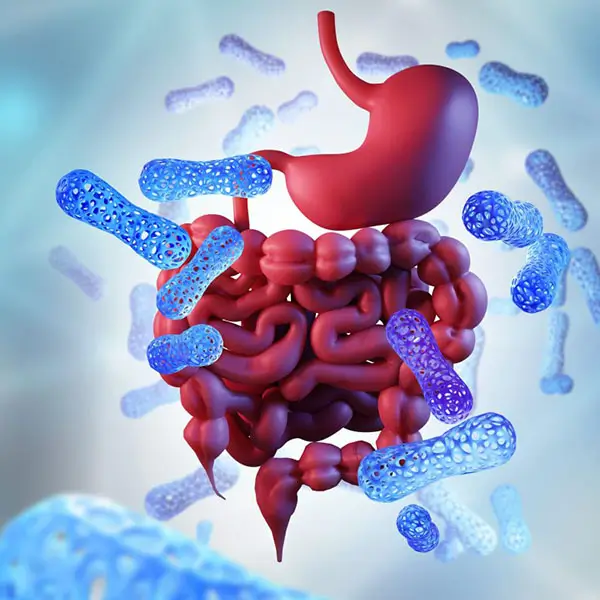
Dysbiosis
Dysbiosis refers to an imbalance in the microorganisms that live in our bodies, particularly in the gut. Under normal circumstances, our microbiome—a collection of bacteria, viruses, fungi, and other microbes—works harmoniously to support our health. However, when this balance is disrupted, it can lead to dysbiosis, which may negatively impact our health.
When dysbiosis happens, beneficial bacteria may be reduced, while harmful bacteria can proliferate. This imbalance can lead to symptoms such as digestive issues, inflammation, and even contribute to chronic health conditions.
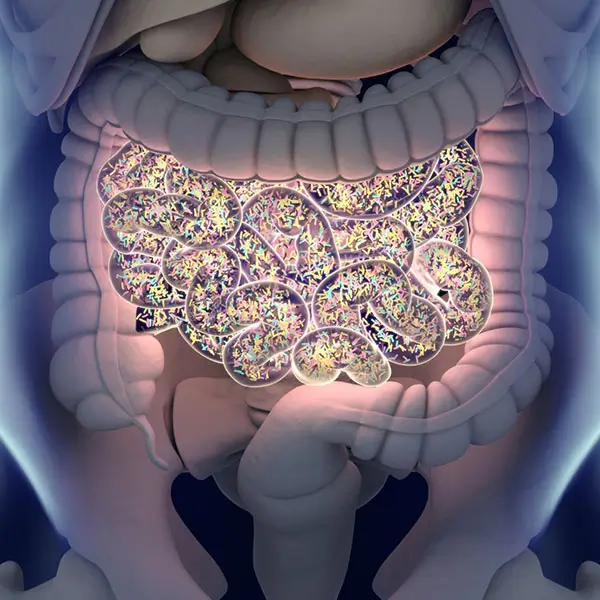
SIBO
SIBO, or Small Intestinal Bacterial Overgrowth, is a condition where there is an excessive growth of bacteria in the small intestine. Normally, the small intestine is relatively sterile, but in SIBO, there is an overpopulation of bacteria that can cause digestive issues.
SIBO often presents with symptoms such as bloating, abdominal pain, diarrhoea, and / or constipation. The bacterial overgrowth can interfere with digestion and nutrient absorption.

Food Intolerance
Food intolerance is a when a person’s gut is sensitive to certain foods, making it difficult for them to digest those foods properly. Unlike food allergies, which ar usually rapid and severe, food intolerance typically leads to discomfort without an allergic response.
When someone with a food intolerance eats a problematic food, they may experience symptoms such as gas, bloating, abdominal pain, and sometimes diarrhoea. These symptoms can vary in severity depending on the individual and the amount of the food consumed.
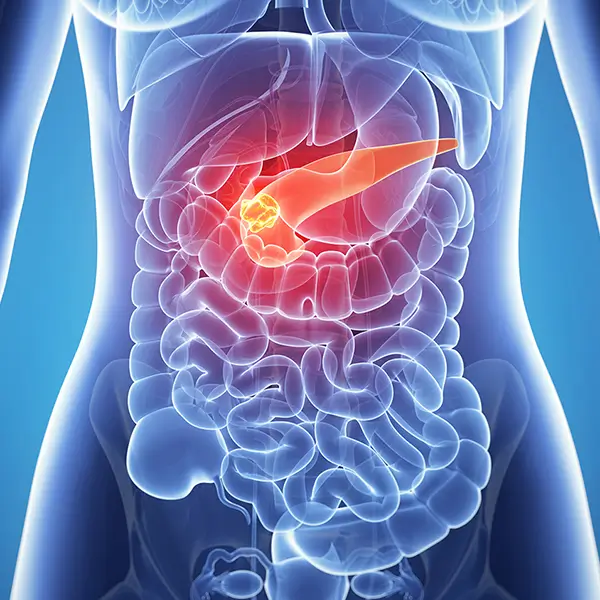
Visceral hypersensitivity
Visceral hypersensitivity refers to an increased sensitivity of the internal organs, particularly in response to normal bodily sensations or stimuli that would not typically cause pain or discomfort. Mild pressure or stretching in the gastrointestinal tract (stomach, and gut), which is usually unnoticed, may be perceived as painful in individuals with this condition.
This heightened sensitivity often manifests as abdominal pain, bloating, and discomfort. It is commonly associated with functional gastrointestinal disorders like Irritable Bowel Syndrome (IBS). In these cases, the nerves in the gut become overly sensitive, sending exaggerated pain signals to the brain even during normal activities like eating or digestion.
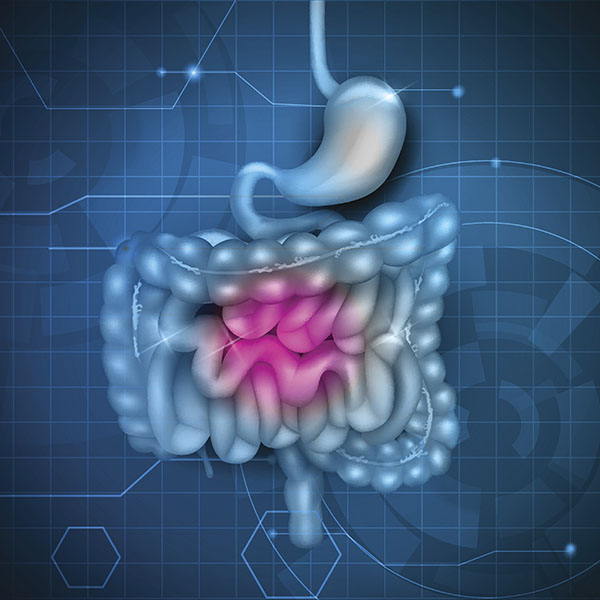
Leaky Gut
Leaky gut, also known as increased intestinal permeability, is a condition where the lining of the intestines becomes damaged, allowing substances like bacteria, toxins, and undigested food particles to “leak” into the bloodstream. Under normal circumstances, the intestinal lining acts as a barrier, absorbing nutrients while keeping harmful substances out. However, when this barrier is compromised, it can lead to various health issues.
People with leaky gut may experience symptoms such as bloating, gas, diarrhoea, and food sensitivities. They may also have wider symptoms such as eczema, itching, autoimmune disease, chronic inflammation and aches and pains in response to eating.

Intestinal Candida
Intestinal candida overgrowth occurs when there is an excessive growth of a yeast called Candida in the gut. Candida is a type of fungus that normally exists in small amounts in the body, particularly in the intestines, mouth, and skin. However, when the balance of healthy bacteria and yeast in the gut is disrupted—often due to factors like a poor diet, stress, or antibiotic use—Candida can multiply excessively, leading to various health issues.
People experiencing candida overgrowth may suffer from symptoms such as bloating, gas, fatigue, and digestive problems. In some cases, it can also lead to more serious conditions if left untreated. The overgrowth can disrupt gut health and may contribute to other health issues, including skin problems and food sensitivities.
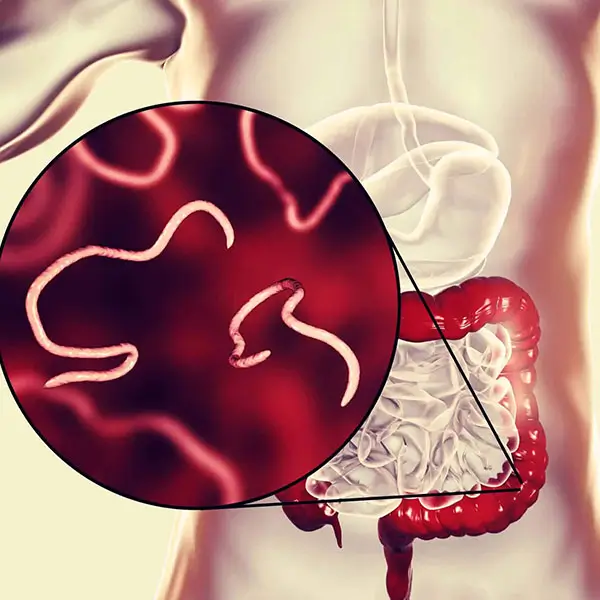
Parasites
Gut parasites are organisms that live in the digestive tract of humans and other animals, relying on their host for survival and nourishment. There are two main types of gut parasites: helminths, which are multicellular worms (like tapeworms and roundworms), and protozoa, which are single-celled organisms. These parasites can enter the body through contaminated food, water, or surfaces, and they can cause a range of health issues.
Infection with gut parasites can lead to various symptoms, including digestive problems, fatigue, weight loss, and sometimes more severe complications. Some people may not experience noticeable symptoms, while others may suffer from significant discomfort.
Digestive Conditions We Support
Heartburn
Heartburn is a burning sensation in the chest, often accompanied by a bitter or sour taste in the throat or mouth. It occurs when stomach acid flows back into the oesophagus, the tube that connects your mouth to your stomach. This happens because the lower oesophageal sphincter (LES), a muscle that normally keeps stomach contents in place, relaxes or weakens, allowing acid to escape.
Several factors can contribute to the sensation of heartburn, including low stomach acid, overproduction of stomach acid, food intolerance, and bile acid reflux. Here’s how each plays a role:
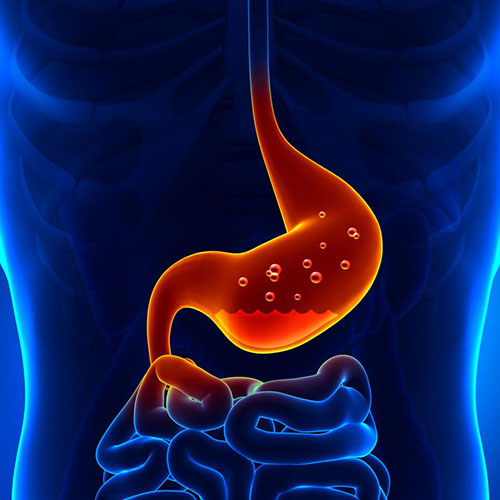
Low Stomach Acid (Hypochlorhydria)
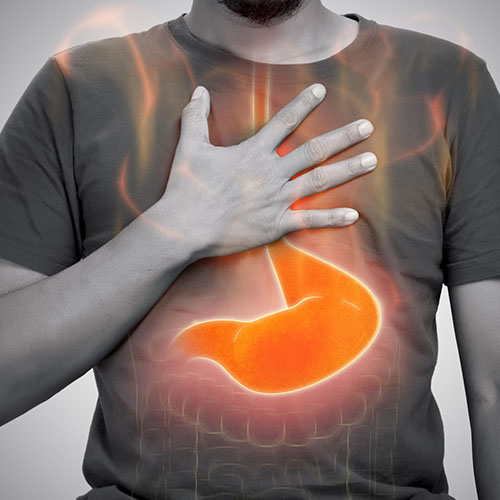
Overproduction of Stomach Acid

Food Intolerance
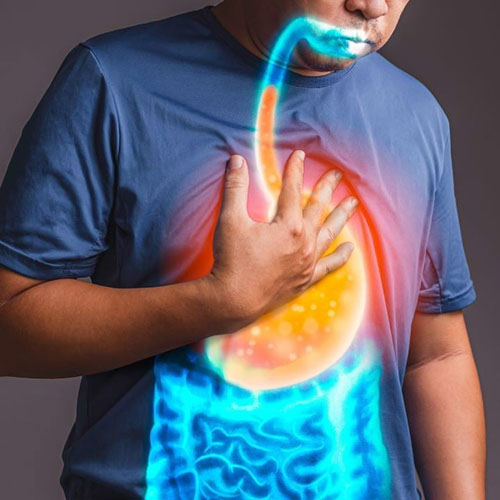
Bile Acid Reflux
Unlike acid reflux, which involves stomach acid, bile acid reflux occurs when bile (a digestive fluid produced by the liver, and stored in the gallbladder) backs up into the stomach and oesophagus. This can irritate the oesophagus and mimic or worsen the sensation of heartburn.

Low Stomach Acid (Hypochlorhydria)
While it might seem counterintuitive, low stomach acid can contribute to heartburn. When stomach acid levels are too low, food may not be properly digested, leading to fermentation and gas production. This gas can increase pressure in the stomach, forcing acid to reflux into the oesophagus.

Overproduction of Stomach Acid
Excess stomach acid can overwhelm the LES, making it more likely for acid to escape into the oesophagus. This is often triggered by factors like stress, certain foods (like spicy or fatty meals), or conditions like GERD (gastroesophageal reflux disease).

Food Intolerance

Bile Acid Reflux
Microscopic Colitis
Microscopic colitis is a condition that causes inflammation in the lining of the colon, leading to chronic, watery diarrhoea. It is characterized by two main types: collagenous colitis and lymphocytic colitis. Unlike other inflammatory bowel diseases, such as Crohn’s disease or ulcerative colitis, microscopic colitis does not show visible signs of inflammation during a colonoscopy, which is why it is termed “microscopic.”
The primary symptom of microscopic colitis is frequent, watery diarrhoea, which can be persistent and may come and go over time. Some individuals may also experience urgency to use the bathroom, and in some cases, symptoms can occur at night. The condition can be triggered by various factors, including certain medications, infections, or dietary changes, but the exact cause is often unclear.
Ulcerative Colitis
Ulcerative colitis (UC) is a chronic inflammatory bowel disease that primarily affects the colon (large intestine) and rectum. It causes inflammation and the formation of sores or ulcers in the lining of the digestive tract. This condition can lead to a variety of symptoms, including abdominal pain, diarrhoea (blood may be present), and urgency to have bowel movements.
People with ulcerative colitis typically experience periods of flare-ups, where symptoms worsen, followed by periods of remission, where symptoms may subside. There is often abnormal immune response, where the body mistakenly attacks its own intestinal cells. Treatment often includes medications to reduce inflammation and manage symptoms, and in some cases, surgery may be necessary.
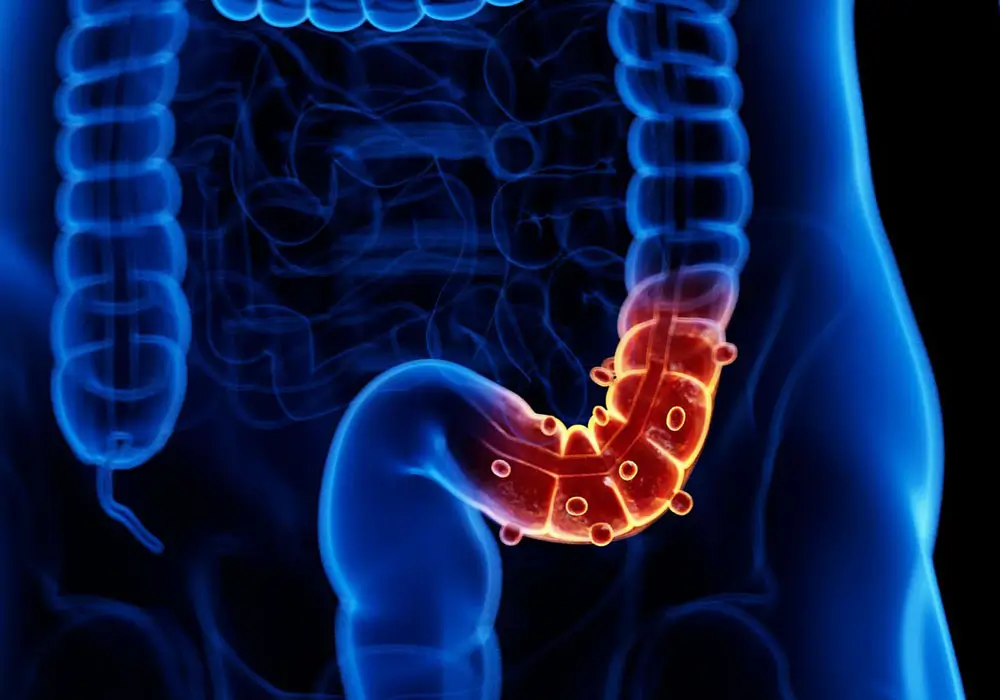
Diverticulitis
Diverticulitis is a gastrointestinal condition that occurs when small pouches, known as diverticula, form in the wall of the colon and become inflamed or infected. This condition is part of a broader category called diverticular disease, which also includes diverticulosis, where the pouches are present but not inflamed.
The symptoms of diverticulitis typically include sudden lower abdominal pain, fever, and changes in bowel habits, such as diarrhoea or constipation. The pain often occurs on the left side of the abdomen, where most diverticula are located.